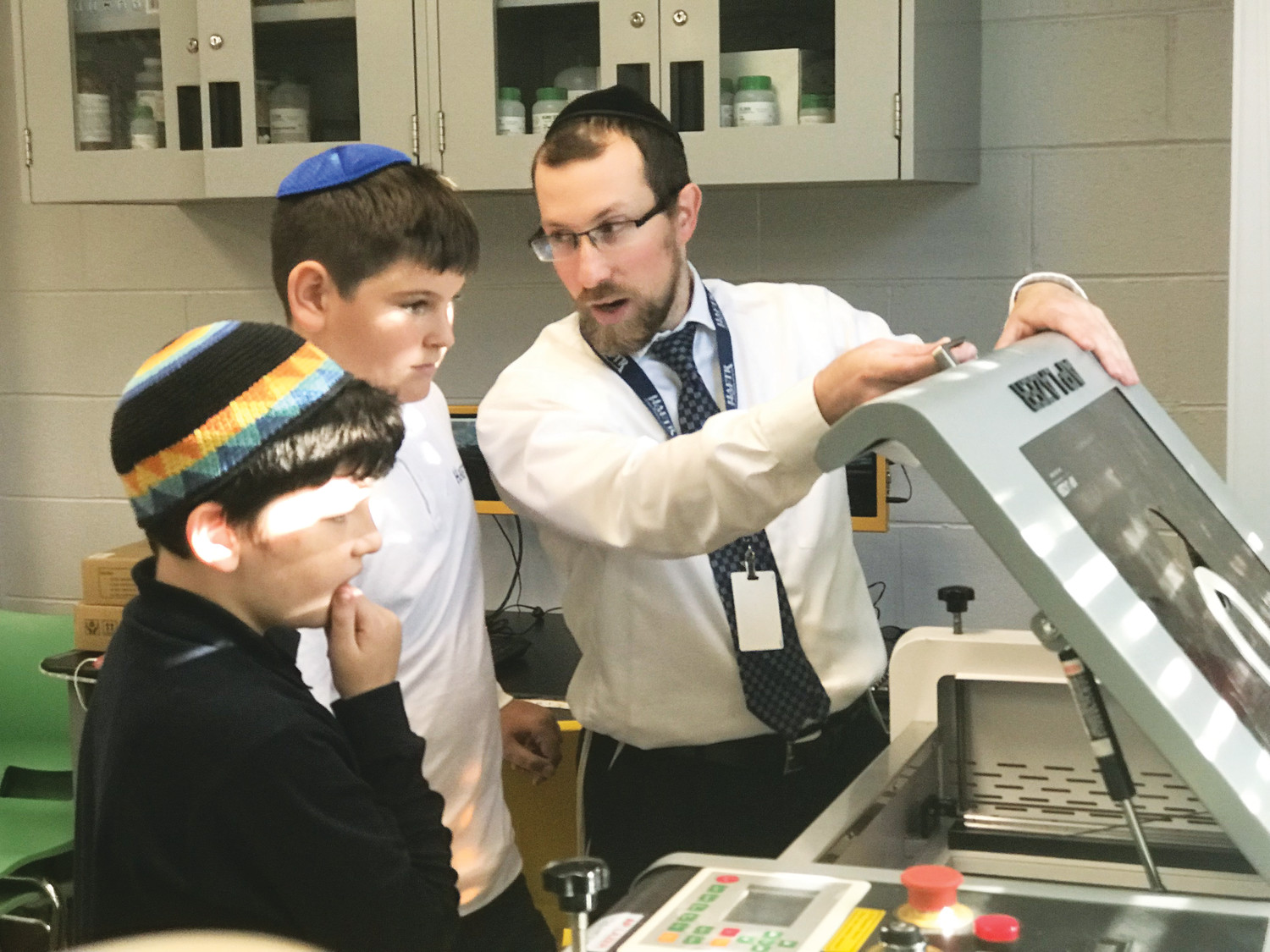Where teachers, students meet technology
Blending curriculum and computers in an evolving, increasingly complex world
Editor’s note: This is the first in a series of stories on what is surely among the most important subjects we cover — Educating the 21st Century Child. These days, as we have found, school remains much as it was 20, 30 or 50 years ago, in the 20th century.
In myriad ways, however, it’s not your father’s or mother’s school anymore. Technology is an ever-expanding part of what teachers are teaching, no matter the class, from English to art, engineering to calculus. At the same time, collaboration among students is critical. Teaching young people how to work together, educators say, is vital in an increasingly interconnected world.
Students still read textbooks and jot notes in paper binders today, but technology reigns supreme in most all Long Island schools and in most all grades, from kindergarten through high school.
How teachers apply that technology and how students learn to use the high-tech devices at their disposal will, no doubt, have a profound effect on education — and the work world of the future.
Shifting career paths
The World Economic Forum estimates that 65 percent — almost two-thirds — of children entering primary school today will ultimately be working in jobs that don’t yet exist. In the U.S., primary school students are 5 to 12 years old.
This year, CNN Money reported that the top job in the United States is application developer. It was a job barely on most people’s career radar a decade ago. App developer jobs are expected to increase by nearly a third through 2020, according to the U.S. Bureau of Labor Statistics.
Three-dimensional printing, which can be used to produce anything and everything, from simple chip clips to keep snack bags closed to complex airboxes for Formula One race cars, would have been the province of the military and the government years ago, as was the case with the first computers. Elementary schools now have access to these devices, and children can understand their applications. Better still, they can use them to create.
“We need to think outside the box and see the potential of each student here at school,” said Josh Wyner, the assistant principal of the Hebrew Academy of the Five Towns and Rockaway High School in Cedarhurst. “One student might grow up to be a programmer and one might grow up to sell me the product, but together we can create a team and atmosphere where our students can collaborate.”
The C’s of education
Creativity, collaboration, communication, critical thinking and culture-based learning have replaced reading, writing and arithmetic as the framework for education.
Chris Pelletier, the assistant superintendent for instruction in the Rockville Centre School District, said that children attending school now will have as many as five different careers over the course of their working lives, and will need to adapt to what he called a “shelf life” for creativity and ever-evolving skills.
He said that critical thinking is about dissecting issues, systems and machines and piecing them back together, while collaboration is needed because “no one works alone anymore. No one is solving problems in a vacuum.” Communication is vital to decipher what is real information and what is not, he said.
“We need to use the tools the kids are using and teach them to use them in a smart way,” Pelletier said, adding that he is a huge advocate of technology. “We have to get beyond old-school formulation.”
To keep the ball moving forward, Lee Araoz, the Lawrence School District’s coordinator of instructional technology said, teachers must immerse themselves in technology and share that knowledge with students. Araoz is also serving on the state’s Educational Technology Advisory Committee for the 2017-18 and 2018-19 school years.
He demonstrates technology tools ranging from Google School to Twitter, and shows teachers the most up-to-date web-based applications, calling it “digital literacy.”
Applying the standards established by the International Society for Technology in Education (see box), he said, teachers can learn the value of being connected educators. Updating standards established in 2008, the ISTE released a revised version earlier this year. The organization, headquartered in Washington, D.C., is a nearly 40-year-old nonprofit that aims to help educators improve their use of technology in education.
“We need to show teachers the value of an online educational community such as Twitter,” Araoz said. “Age has nothing to do with it. It’s about attitude. Teachers are much more invested when it comes from within.”
There are also ISTE standards for students — at www.iste.org — that should also help propel the way they are educated, Araoz said, adding, “Students really feel self-involved in the learning process in a unique and creative way.”
Next week: Applying technology in the classroom.

 48.0°,
Overcast
48.0°,
Overcast 




